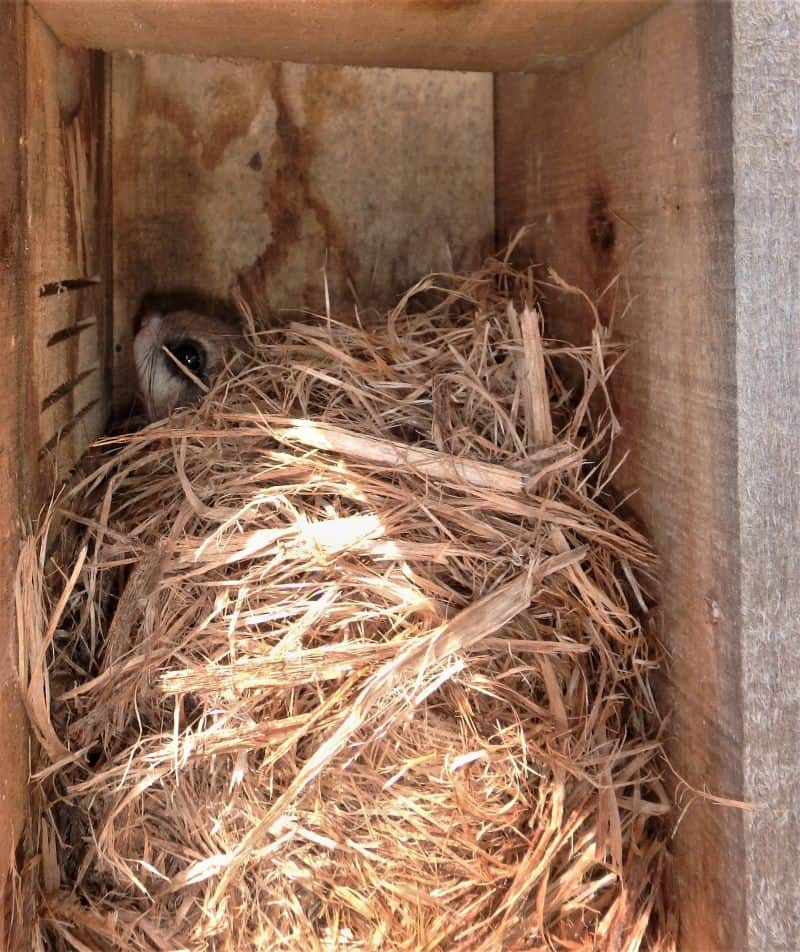Mariton: Big Black Eyes
by Tim Burris, Preserve Manager

Photo by Tim Burris.
I hope you enjoy this photo of a Southern Flying Squirrel (Glaucomys volans). It is using one of Mariton’s nest boxes. It doesn’t always show itself when I monitor the box each week – flying squirrels are nocturnal and I monitor during the day while it is sleeping. This week, it poked out when I opened the box, and the camera was ready just in case.
I have a long relationship with flying squirrels. They are gentle creatures. Maureen and I lived in a house that had flying squirrels in the attic when we were first married. (The attic also had a Screech Owl, but that is another story.) The flying squirrels would sneak down to the house at night to catch a drink from a drippy faucet, and we occasionally got to see them if we also got up for drink. (I would not encourage anyone to attract flying squirrels into their house as they can have lice and parasites, but we enjoyed sharing space with them, and never had any problems.)
The thing that struck me, in the glow of a night light, was their giant black eyes. Over the years, I’ve found them in nest boxes. I’ve watched their silhouettes gliding from tree to tree on night walks. I’ve had them scurry up my tree while I was sitting in a pre-dawn treestand. Those eyes always capture my attention. They could be the most abundant mammal that no one ever sees.
I was surprised to read recently that flying squirrels are the most carnivorous of the squirrel family and dine on birds and bird eggs along with nuts, berries, seeds, etc. While the squirrels use the nest boxes for nesting and storing nuts, I’ve never found evidence of them feeding on any of the birds using the nest boxes.
